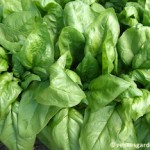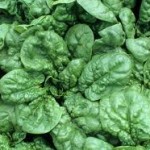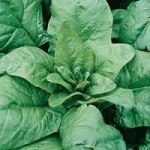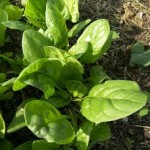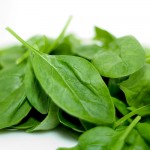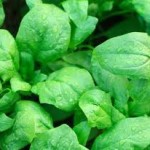Spinach is a superstar among green leafy vegetables. This low-calorie food is full of nutrients that are good for your body in several ways. From boosting the immune system — your body’s defense against germs — to helping your heart, its advantages might surprise you.
Spinach belongs to the Chenopodiaceae family (also known as goosefoot), which includes beetroot, chard, and quinoa. It shares a similar taste profile with these vegetables – the bitterness of beet greens and the slightly salty flavor of chard. There are three different types of spinach available: savoy, semi-savoy, and smooth leaf.
| Spinach Quick Facts | |
|---|---|
| Name: | Spinach |
| Scientific Name: | Spinacia oleracea |
| Origin | Southwestern Asia |
| Colors | Light-dark green (Leaves) |
| Shapes | Alternate, simple, ovate-triangular; Length: 1-12 inches (Leaves) |
| Calories | 7 Kcal./cup |
| Major nutrients | Vitamin K (120.75%) Vitamin A (20.14%) Vitamin B9 (14.50%) Manganese (11.70%) Iron (10.13%) |
| Health benefits | Eye ailments, Age-related disease, Neural functions, Reduces blood pressure, Supports muscles |
Spinach also called Spinacia oleracea is a leafy green vegetable that is cultivated for its edible leaves and added to various recipes. Spinach is an annual or rarely biennial plant that prefers well-drained soil and is grown in cool climates. It has a lifespan of one year.
Spinach Scientific Classification
Scientific Name: Spinacia oleracea
| Rank | Scientific Name & (Common Name) |
|---|---|
| Kingdom | Plantae (Plants) |
| Subkingdom | Tracheobionta (Vascular plants) |
| Superdivision | Spermatophyta (Seed plants) |
| Division | Magnoliophyta (Flowering plants) |
| Class | Magnoliopsida (Dicotyledons) |
| Subclass | Caryophyllidae |
| Order | Caryophyllales |
| Family | Chenopodiaceae (Goosefoot family) |
| Genus | Spinacia L. (Spinach) |
| Species | Spinacia oleracea L. (Spinach) |
| Synonyms |
|
History
Spinach is native to Southwestern Asia. During the early 7th century AD, it reached China through Nepal. In the early 8th century, until spinach was recognized in Spain, it did not reach Europe. In 1568, Spinach was planted in England. It was introduced by the colonists to the Western Hemisphere of three varieties. Around 1812, Spinach was new to the American gardens.
Plant
Spinacia oleracea grows 30 centimeters in height. The leaves are simple, alternate, ovate-triangular in shape, and 1-12 inches long which is usually dark green in color. The flowers are yellow-green, inconspicuous and 3–4 mm in diameter. The fruit is small, hard dry, lumpy which is across 1/4-1/2 inches. The stems are thin, flexible about 12 inches high.
Nutritional value of Spinach, Raw
Calories 7 Kcal.Calories from Fat 1.08 Kcal.
| Proximity | Amount | % DV |
|---|---|---|
| Water | 27.42 g | N/D |
| Energy | 7 Kcal | N/D |
| Energy | 29 kJ | N/D |
| Protein | 0.86 g | 1.72% |
| Total Fat (lipid) | 0.12 g | 0.34% |
| Ash | 0.52 g | N/D |
| Carbohydrate | 1.09 g | 0.84% |
| Total dietary Fiber | 0.7 g | 1.84% |
| Total Sugars | 0.13 g | N/D |
| Sucrose | 0.02 g | N/D |
| Glucose (dextrose) | 0.03 g | N/D |
| Fructose | 0.04 g | N/D |
| Lactose | 0 g | N/D |
| Maltose | 0 g | N/D |
| Galactose | 0.03 g | N/D |
| Minerals | Amount | % DV |
|---|---|---|
| Calcium, Ca | 30 mg | 3.00% |
| Iron, Fe | 0.81 mg | 10.13% |
| Magnesium, Mg | 24 mg | 5.71% |
| Phosphorus, P | 15 mg | 2.14% |
| Potassium, K | 167 mg | 3.55% |
| Sodium, Na | 24 mg | 1.60% |
| Zinc, Zn | 0.16 mg | 1.45% |
| Copper, Cu | 0.039 mg | 4.33% |
| Manganese, Mn | 0.269 mg | 11.70% |
| Selenium, Se | 0.3 µg | 0.55% |
| Vitamins | Amount | % DV |
|---|---|---|
| Water-soluble Vitamins | ||
| Vitamin B1 (Thiamin) | 0.023 mg | 1.92% |
| Vitamin B2 (Riboflavin) | 0.057 mg | 4.38% |
| Vitamin B3 (Niacin) | 0.217 mg | 1.36% |
| Vitamin B5 (Pantothenic acid) | 0.02 mg | 0.40% |
| Vitamin B6 (Pyridoxine) | 0.058 mg | 4.46% |
| Vitamin B9 (Folate) | 58 µg | 14.50% |
| Folic Acid | 0 µg | N/D |
| Folate, food | 58 µg | N/D |
| Folate, DEF | 58 µg | N/D |
| Choline | 5.8 mg | 1.05% |
| Vitamin C (Ascorbic acid) | 8.4 mg | 9.33% |
| Fat-soluble Vitamins | ||
| Vitamin A, RAE | 141 µg | 20.14% |
| Vitamin A, IU | 2813 IU | N/D |
| Beta Carotene | 1688 µg | N/D |
| Betaine | 30.8 mg | N/D |
| Lutein + zeaxanthin | 3659 µg | N/D |
| Vitamin E (alpha-tocopherol) | 0.61 mg | 4.07% |
| Tocopherol, gamma | 0.05 mg | N/D |
| Vitamin K (phylloquinone) | 144.9 µg | 120.75% |
| Lipids | Amount | % DV |
|---|---|---|
| Fatty acids, total saturated | 0.019 g | N/D |
| Myristic acid 14:00(Tetradecanoic acid) | 0.003 g | N/D |
| Palmitic acid 16:00 (Hexadecanoic acid) | 0.015 g | N/D |
| Stearic acid 18:00 (Octadecanoic acid) | 0.001 g | N/D |
| Fatty acids, total monounsaturated | 0.003 g | N/D |
| Palmitoleic acid 16:1 (hexadecenoic acid) | 0.002 g | N/D |
| Oleic acid 18:1 (octadecenoic acid) | 0.002 g | N/D |
| Fatty acids, total polyunsaturated | 0.05 g | N/D |
| Linoleic acid 18:2 (octadecadienoic acid) | 0.008 g | N/D |
| Linolenic acid 18:3 (Octadecatrienoic acid) | 0.041 g | N/D |
| Phytosterols | 3 mg | N/D |
| Amino acids | Amount | % DV |
|---|---|---|
| Tryptophan | 0.012 g | 2.73% |
| Threonine | 0.037 g | 2.10% |
| Isoleucine | 0.044 g | 2.63% |
| Leucine | 0.067 g | 1.81% |
| Lysine | 0.052 g | 1.56% |
| Methionine | 0.016 g | N/D |
| Cystine | 0.01 g | N/D |
| Phenylalanine | 0.039 g | N/D |
| Tyrosine | 0.032 g | N/D |
| Valine | 0.048 g | 2.27% |
| Arginine | 0.049 g | N/D |
| Histidine | 0.019 g | 1.54% |
| Alanine | 0.043 g | N/D |
| Aspartic acid | 0.072 g | N/D |
| Glutamic acid | 0.103 g | N/D |
| Glycine | 0.04 g | N/D |
| Proline | 0.034 g | N/D |
| Serine | 0.031 g | N/D |
| Flavones | Amount | % DV |
|---|---|---|
| Luteolin | 0.2 mg | N/D |
| Flavonols | Amount | % DV |
|---|---|---|
| Kaempferol | 1.9 mg | N/D |
| Myricetin | 0.1 mg | N/D |
| Quercetin | 1.2 mg | N/D |
*Above mentioned Percent Daily Values (%DVs) are based on 2,000 calorie diet intake. Daily values (DVs) may be different depending upon your daily calorie needs. Mentioned values are recommended by the U.S. Department of Agriculture. They are not rxharun.com recommendations. Calculations are based on average age of 19 to 50 years and weigh 194 lbs. Source: https://ndb.nal.usda.gov/
Health Benefits of Spinach
Spinach is loaded with Vitamin C, folic acid, Vitamin K, calcium, fiber, iron, and carotenoids. The dietary fiber found in Spinach plays a vital role in treating constipation, good digestion, and maintaining low levels of blood sugar. Flavonoid helps to slow down the process of cell division in skin cancer and human stomach cells. It is protective against prostate cancer as well.
- Eye ailments
Spinach is an excellent source of lutein, beta carotene, and xanthene which is essential to have healthy eyesight. It prevents the deficiency of Vitamin A, eye ulcers, itching eyes, and dry eyes. The anti-inflammatory properties found in Spinach assist in the reduction of eye irritation and puffiness. (1)
- Age-related disease
Retinitis pigmentosa or AMD is a kind of blindness that is caused due to the decline of lutein and xanthene that forms a central part of the retina. The research has shown that the intake of Spinach helps to regain these two essential pigments and also prevents AMD. Spinach also provides an antioxidant that lowers the effects caused by free radicals that lead to age-related conditions such as macular degeneration and glaucoma as well as a negative impact on vision.
- Neural functions
Spinach possesses folate, potassium, and various antioxidants which helps to provide neurological advantages to those who intake it daily. Folate lowers Alzheimer’s disease occurrence. The addition of spinach to the diet that is more prone to cognitive or neural decline would be helpful. Potassium is vital for maintaining brain health as it increases the flow of blood to the brain which increases concentration, cognition, and neural activity. (2)
- Reduces blood pressure
Spinach is low in sodium and rich in potassium. It is helpful for patients with high blood pressure because sodium raises and potassium lowers the pressure of blood. The folate reduces hypertension and calms the blood vessels by maintaining the proper flow of blood. This also reduces the stress of the cardiovascular system and raises the oxygenation to the organs for its effective function. (3)
- Supports muscles
Factor C0-Q10 is an antioxidant that is found in Spinach that helps to strengthen heart muscles that pump the blood continuously to all parts of the body. C0-Q10 treats and prevents cardiovascular diseases such as heart failure, hyperlipidemia, coronary heart disease, and hypertension.
- Bones
Vitamin K helps to retain calcium in the bone matrix that results in bone mineralization. Spinach also provides the minerals such as copper, magnesium, manganese, phosphorus, and zinc that assist in having strong bones. It prevents the development of osteoporosis conditions. It also maintains healthy nails and teeth. (4)
- Cataracts
Zeaxanthin and lutein are antioxidants found in Spinach that helps to prevent the eyes from the harmful effects of UV rays that can result in cataracts. It lowers the effects of free radicals that lead to cataracts and various eye ailments. (5)
- Metabolic functions
Spinach possesses an impressive amount of protein which is converted into amino acids by enzymes which is required for humans. The protein helps in the growth and development of muscles, heals wounds, and enhances the metabolism of the body that helps to enhance the functions of organs at the maximum. The research shows that thylakoid can curb hunger and cravings that assist in weight loss.
- Treats ulcers
The spinach prevents gastric ulcers by protecting the mucous membrane of the stomach. Glucocyclerolipids enhance the digestive tract lining by preventing unwanted inflammation in the body which would cause harm. (6)
- Prevent strokes
The hardening of arteries is the cause of atherosclerosis. Spinach possesses lutein which is a pigment that lowers the occurrence of heart attacks, atherosclerosis, and strokes. The protein found in Spinach lowers the fat deposits and cholesterol in the blood vessels. (7)
- Proper development of the fetus
Folate is found inadequate amount which is vital for the proper development of the nervous system of the fetus. The folate deficiency causes defects such a spina bifida or cleft palate. Spinach is high in the content of Vitamin A which is essential for the development of lungs in the fetus that is transferred through breastfeeding. One should continue the consumption of spinach after birth also. (8)
- Anti-inflammation
Spinach possesses anti-inflammatory properties that help to reduce inflammation in the body. It helps to prevent heart inflammation, prevent cancer, reduce pain and inflammation caused by gout and arthritis that affects health.
- Anti-cancer activity
Spinach helps in the prevention and treatment of various types of cancer such as prostate bladder, lung, and liver cancer. Spinach possesses the constituents such as tocopherol, folate, and chlorophyllin which help to treat cancer.
Studies have shown that spinach is helpful for prostate cancer. The carotenoids such as violaxanthin and neoxanthin help to reduce cancer growth and tumorous activity in the body. (9) (10)
- Protects skin
Spinach possesses various pigments and phytonutrients which help to protect skin from the harmful UV rays of the sun. It prevents skin cancer with the repair of damaged genes as well. (11)
- Growth of infants
The cartoon “Popeye the Sailor Man” improved the children’s intake of spinach. Infants were convinced to eat spinach and be strong as it is rich in vitamins, protein, phytonutrients, and minerals. It helps in the development in their growth stages.
15 Health Benefits of Spinach Juice
Spinach is linked to numerous health benefits that improve your eyesight, cancer prevention and regulate blood sugar. This is the actual reason why this leafy green is considered a superfood. Here are some health benefits of spinach that you need to know.
1. Prevents Cancer
Spinach has a high source of zeaxanthin and carotenoids that can flush out the free radicals from your body. These free radicals make your body prone to many diseases including cancer and as a result, spinach is said to prevent cancer. So all you need to do is to consume spinach and prevent yourself from stomach cancer, mouth cancer and esophagus cancer.
2. Reduces Blood Sugar
Spinach is said to have high potassium content that is usually recommended for people suffering from high blood pressure. So how does potassium benefit a person suffering from high blood pressure? Well, potassium reduces the effects of sodium in the body.
3. Aids in Good Bone Health
Spinach contains vitamin K that aids in good bone health and this means adequate consumption of vitamins can do good to your health. It also improves calcium absorption by your body. Spinach contains 250 milligrams of calcium per cup and this is much required by your bones and teeth. Calcium is a strengthening agent for your bones and keeps your bones healthy.
4. Aids in Weight Loss
If you are planning to reduce your weight, then it advised that you add spinach onto your weight loss diet and this will do you good. Spinach leaves aids in weight loss and also are low in calories. Its high amounts of fiber content also help in good digestion, regulate low blood sugar and prevent constipation. All you need to do is to consume spinach once a day and this will do good for your health. Spinach makes feel full and curbs your appetite. So adding this to your everyday diet will help benefit you in multiple ways.
5. Good For Your Eyes
The antioxidants that are found in spinach are lutein and zeaxanthin and these help in providing good eyesight. It also protects yours from cataracts, age-related macular degeneration, and other eye problems. The vitamin A found in spinach helps to maintain mucus membranes that are essential for normal eyesight.
6. Reduces Hypertension
Hypertension is also known as high blood pressure is responsible for causing many heart diseases, kidney disease, and strokes. Thus consuming this superfood can prevent all these risks and keep you healthy. Consuming at least once a day can reduce anxiety and stress and help you keep a calm mind. Spinach contains vitamin C that also helps in reducing hypertension.
7. Has Anti-inflammatory Properties
This superfood contains neoxanthin and violaxanthin are two anti-inflammatory properties that regulate inflammation. Its high source of anti-inflammatory properties can help you prevent osteoporosis, migraine, asthma, arthritis, and headaches. So make sure that you add this healthy leafy green to your regular diet and reap the benefits of it.
8. Keeps Your Body Relaxed
Spinach keeps your mind calm so that you do not get tensed and maintain a stress-free life. Its high source of zinc and magnesium enables you to get good sleep at night and good sleep can help aid all your mental illnesses. This will help your body stay relaxed and rest your eyes. So consuming spinach at least once a day can definitely do good to your health.
9. Keeps Your Brain Functioning Normally
This leafy green helps in the smooth functioning of your brain, especially during old age. Thus consuming this leafy green on a daily basis will keep your brain active and enable you to think intelligently. Its content of vitamin K, Vitamin K helps a healthy nervous system and aid in normal behavior.
10. Boosts Your Immunity
Vitamin A content found in spinach is said to strengthen the entry points in the human body such as respiratory, intestinal tracts, and mucus membranes. So all you need to do is to consume one cup of spinach every day and stay healthy. It energizes you and keeps you active all day.
11. Prevents Heart Attacks and Atherosclerosis
Over the years excessive fat gets stored in your arteries and this leads to thickening of the human artery which results in strokes and atherosclerosis. However, the arteries tend to harden over the years, and in order to prevent this from happening you need to consume spinach that will prevent this from happening. This is because of a substance called lutein that is responsible for preventing your arteries from thickening. This substance also prevents the risk of developing heart diseases.
12. Prevents Anaemia
Spinach has a high source of iron content in it that can prevent you from the risks of developing anemia. Iron is also good for women who are menstruating, children, and adults. Iron also boosts energy in the human body and also helps in carrying oxygen to all the cells of the body.
13. Glowing Skin
Your skin is the largest and the most sensitive part of your body and if you are looking for a skin texture that is glowing, then you need to try consuming some spinach. However, our skin requires essential nutrients and minerals that need to keep it healthy and as a result, this leafy green vegetable is the right dose that can do good to your skin. Some of the vital nutrients that spinach contains are vitamin A, vitamin C, vitamin E including vitamin K which play an important role in healthy skin.
14. Prevents Acne
Acne is a skin condition that can reduce your self-confidence in society and can also damage your skin and leave skin scars that can be permanent. Well, if you have acne try consuming some spinach, and this eases the inflammation in your skin and reduces acne. You can also prepare a facial mask by making some spinach paste and adding a little water. Once this is done you need to apply it onto your face and wait for 20 minutes. This will reduce inflammation in your skin and remove dirt and extra oil that causes acne.
15. Natural Anti-Ageing Properties
Premature aging is one of the most common problems that most youths are facing today. However, spinach comes loaded with antioxidants that have the tendency to destroy and prevent free radicals that cause premature aging. Consuming spinach on a regular basis will benefit your skin and give it a shiny texture. Instead, it will rejuvenate your skin and make you look younger and healthy.
Types of Spinach
Spinach is classified into three types: Savoy, Flat-leaf, and Semi-savoy spinach. The older varieties could be differentiated from newer types through the look and flavor. The older varieties have narrow leaves with a strong and bitter flavor. Modern varieties grow faster and have wider leaves and rounder seeds.
1. Savoy spinach
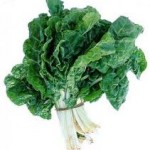 Savoy spinach has curly, crinkly, and dark green leaves. It thrives in cold much better than other spinach. The types of savoy spinach are Bloomsdale which is fairly resistant to bolting and has thicker leaves which is consumed raw or added to salads; Viroflay which is spinach with higher yields; Regiment which has deep green leaves that is soft.
Savoy spinach has curly, crinkly, and dark green leaves. It thrives in cold much better than other spinach. The types of savoy spinach are Bloomsdale which is fairly resistant to bolting and has thicker leaves which is consumed raw or added to salads; Viroflay which is spinach with higher yields; Regiment which has deep green leaves that is soft.
a. Regiment possesses deep green leaves which is soft even if it is huge.
b. Bloomsdale is thick-leafed spinach that thrives in cool much better than other varieties. Huge yields are created at the beginning of summer. It is fairly resistant to bolting.
2. Flat-leaf spinach
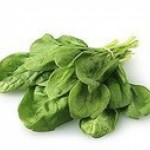 Flat-leaf is also called smooth-leaf spinach which could be recognized by its smooth and wide leaves. It is simple to wash and clean in comparison to varieties of crinkly savoy. It is frozen and canned. The varieties of Flat-leaf are space and red cardinal. Space is slower to bolt and Red Cardinal has red veins in leaves like beet leaves.
Flat-leaf is also called smooth-leaf spinach which could be recognized by its smooth and wide leaves. It is simple to wash and clean in comparison to varieties of crinkly savoy. It is frozen and canned. The varieties of Flat-leaf are space and red cardinal. Space is slower to bolt and Red Cardinal has red veins in leaves like beet leaves.
3. Semi-savoy spinach
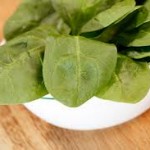 Semi-savoy spinach is a hybrid variety with some crinkled leaves. Semi-savoy is the easiest spinach to grow in a garden.
Semi-savoy spinach is a hybrid variety with some crinkled leaves. Semi-savoy is the easiest spinach to grow in a garden.
Various types of semi-savoy are Tyee which is cultivated all year round in the places with moderate winter and is resistant to Downey Mildew races, bolting which grows vertical intensely along with dark green leaves; Catalina which possess thicker leaves in spear shape having moderate bolt resistance and Teton which possess deep green oval leaves.
a. Tyee is a variety of semi-savoy with dark green leaves, vertical development having an excellent resistant to bolt. It is cultivated in mild-winter areas all year long.
b. Catalina has delicious, thicker, and spear-shaped leaves which possess a reasonable resistance to bolt.
c. Teton is semi-savoy spinach with oval, deep green leaves on its upright plants. It is very slow to bolt.
d. Indian Summer is spinach that is grown for three seasons such as spring, summer, and fall. The semi-savoy leaves are flattened and smooth. It is also extremely slow against the bolt.
4. Smooth-Leafed Spinach
It is a spinach that has smooth and flat leaves that are easier to clean and makes it the main option of refined spinach.
a. ‘Space’(F1 Hybrid, 45 days, resistant against races 1-3 of Downey Mildew) is sluggish to bolt compared to most smooth-leafed types.
b. Red Cardinal has red veins in the leaves. It is harvested during baby greens which are used for salad. They are quick to bolt in comparison to other green-leafed spinach.
Alternative Spinach Varieties
1. New Zealand Spinach
 New Zealand Spinach has sharp leaves which are delicious that melt within the mouth when brightened upon them. It is great to use raw as it melts into mush when cooked.
New Zealand Spinach has sharp leaves which are delicious that melt within the mouth when brightened upon them. It is great to use raw as it melts into mush when cooked.
2. Malabar Spinach
 Malabar Spinach needs a lot of summer heat with trellis in order to climb to reach its potential-a 10’ or 3 m vine. The side shoots and leaves are harvested and stir-fried for consumption.
Malabar Spinach needs a lot of summer heat with trellis in order to climb to reach its potential-a 10’ or 3 m vine. The side shoots and leaves are harvested and stir-fried for consumption.
How to Select
Though Spinach is available in every season, its peak season is March-May and September-October is the finest. It has a good taste and is easily available.
The Spinach with deep green leaves and stems should be selected without any yellow indications. The leaves should be fresh and tender and should avoid wilted and bruised ones. Those that have a slimy coating should be prevented which indicates a sign of decay.
How to Store
The fresh spinach should be packed freely in a plastic bag in a refrigerator where it’ll be fresh for about 5 days. It should not be cleaned before storing because the moisture may ruin the spinach. The cooked spinach should not be kept because it won’t be able to keep it perfectly.
How to Get More Spinach in your Diet:
- The chopped, fresh or frozen spinach should be added to lasagna.
- The chopped or frozen spinach could be added to veggie soup recipes.
- Spinach could be sautéed with some garlic to make a delicious food mixture. It should be placed on the surface of a baked potato.
- It could be consumed with crunchy other raw vegetables, whole-grain pieces of bread such as pumpernickel.
- Fresh spinach could be used in the sandwiches.
- The chopped, fresh or frozen spinach could be added to frittatas and omelets.
WILTED
1. With Skirt Steak
Eight ounces of skirt steak should be seared in a huge skillet which should be kept at a high temperature. The pan should be allowed to cool a little bit. Add two tablespoons of butter and sliced spinach. Mix and cook it till it is wilt. Add three tablespoons of olive oil, two chopped tomatoes, one tablespoon of balsamic vinegar, 1/2 chopped red onion, and let them cook for another minute. Toss with sliced steak, 1/2 cup of crumbled blue cheese which enhances the taste.
2. With Bacon
Make four thick slices of bacon slices within olive oil till almost it is crisp and removed. Toss a Spinach with the tarragon sprig within rendered fat to wilt. Add 1/2 pound of chopped mushrooms and onion. Top with the bacon.
3. With Chicken
Cook chicken breast with olive oil and brown it. Put three tablespoons of butter and then add spinach. Add tomatoes with sliced scallions. Then use the sliced chicken and lemon juice as a topping.
STEAMED
1. With Parmesan
The washed Spinach should be covered in the pot on medium to high heat. Put 2-4 tablespoons of butter in a saucepan in above medium heat. It should bestir from time to time till foam is reduced and butter to turn into a nut brown. As spinach becomes soft after 3-5 minutes, drizzle with the use of butter, and the half a cup should be added to every shaved Parmesan and toasted bread crumbs. Then toss to mix.
2. With or Without Anchovies
Within the butter, make 2 cloves garlic then half cup raisins should be added with 2 tablespoons of pine nuts. Then the spinach should be tossed with this combination rather than cheese or bread crumbs.
3. With Cashews
Use 2 tablespoons of sesame oil than butter. Then mix one chopped green chili. Add 3/4 cup of cashews and then cook them till it is gently brown. Spinach should be tossed with it by adding 2 tablespoons lime juice and ¼ cup of sliced scallions.
BRAISED
1. With Eggs
The big saucepan should be placed 4 tablespoons of butter above the medium heat. After it gets hot, one handful of spinach should be placed at a time. Mix it and sauté for about five minutes till it wilted. 4 nests should be formed within spinach and then crack an egg in each nest made. It should be cooked until the egg whites are not set which is about 4 minutes.
2. With Mussels
Sauté one sliced white onion in butter. Then add 3 tablespoons of white wine. Spinach should be cooked within this as above and 1 pound mussels for eggs should be replaced. It should be cooked till they are open.
3. With Soy and Ginger
In the huge saucepan, put two tablespoons of sesame oil with 2 cloves of minced garlic, 1 tablespoon of grated ginger, and 1 tablespoon of soy sauce. Spinach should be included and braised for about ten minutes until it is soft and wilted.
SUPERSLOW-COOKED
1. With Cream
Put a deep skillet over medium to low heat and place 2 tablespoons of butter. Put a quarter of spinach and cook till the butter is soaked by spinach. Add another tablespoon of butter and spinach and mix it. It should be repeated till all the spinach is utilized. Place 1 cup of cream and cook it for about fifteen minutes until the cream is thicker.
2. With Indian Spices
Two onions and one clove of minced garlic should be sauteed in a neural oil with 1 teaspoon of cumin, cardamom, and coriander each. Add 1 cup of coconut milk with a handful of tablespoons every time while changing the handful of spinach. Cook and mix it from time to time until the coconut milk becomes thick for about 1 hour. Then add 1/2 cup of chickpeas and heat it.
3. With Rice and Carrots
Place 1/2 pound carrots and 6 cups of water in a pan above high temperature. Boil it and then add rice about 1/2 cup. When it is heated and boiled then add simmer and spinach. It should be mixed and cooked until the carrots are soft for about 1/2 hour. After that add 3 cloves of minced garlic with 2 tablespoons of butte
References

